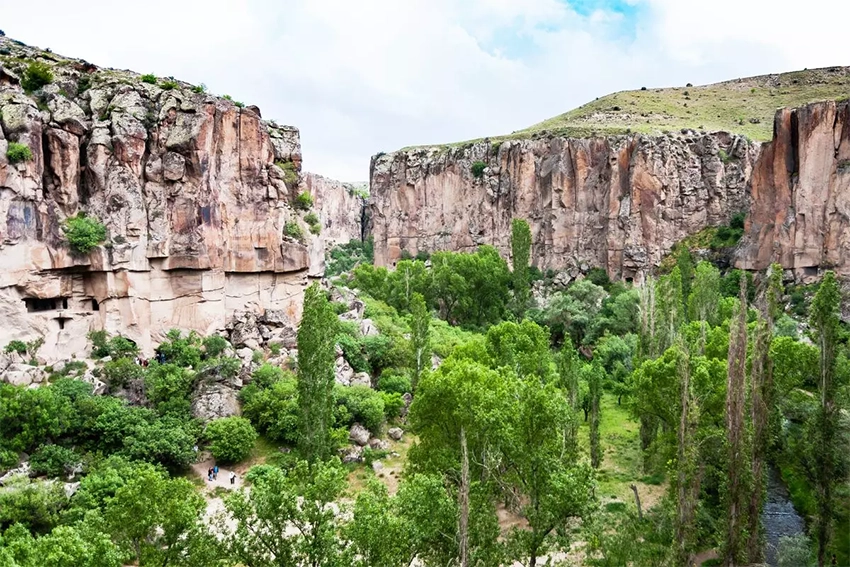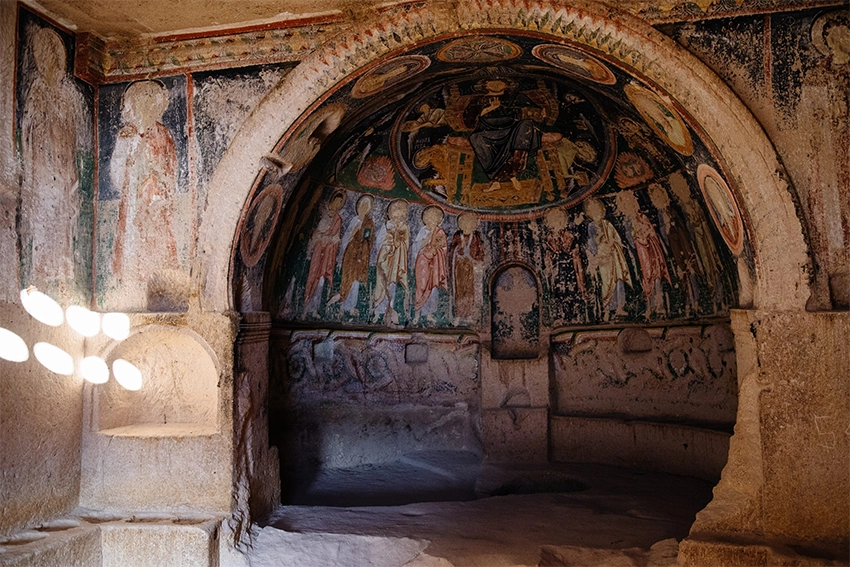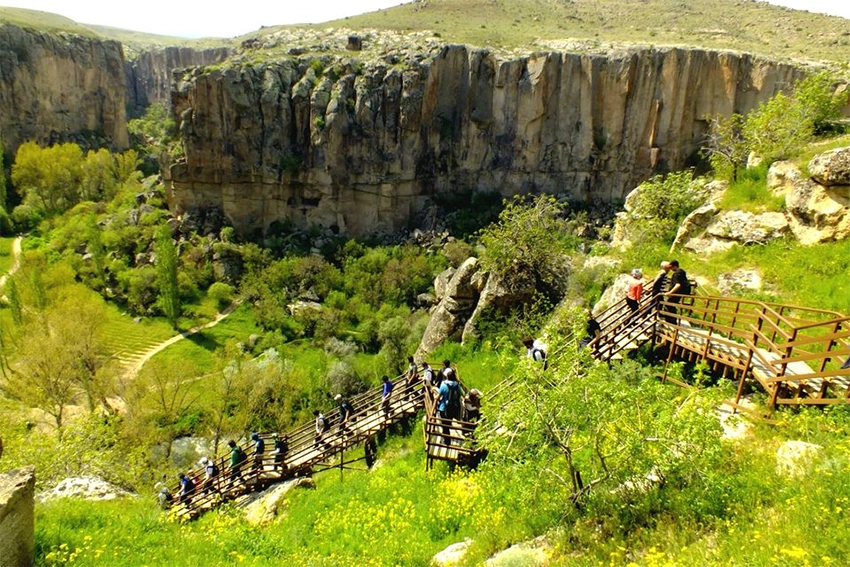Ihlara Valley Hiking Routes
Ihlara Valley Hiking Routes
Historical and Cultural Background
Ihlara Valley is a deep canyon carved by the Melendiz River, stretching 14 km and reaching depths of up to 120 meters. It begins at the village of Ihlara in Aksaray Province and extends north toward Tuz Lake. In the 4th century, Christian monks seeking solitude settled here, carving dwellings and churches into the rock faces. At its peak, the valley is thought to have hosted up to 80,000 residents.
Ihlara became an important spiritual hub of early Christianity, with over 100 cave churches decorated with Byzantine frescoes. The valley continued to be used during the Seljuk and Ottoman periods, and today it remains one of Cappadocia’s most remarkable cultural landscapes.

Natural Landscape
Formed by ancient volcanic activity from Mount Hasan, the valley was shaped over millennia as the river cut through soft volcanic rock. Declared a Special Environmental Protection Area in 1990, Ihlara hosts lush vegetation such as pistachio pines, oleanders, and wild grapevines, and is home to more than 80 bird species.
Churches and Frescoes
Over 100 churches and chapels are scattered along the cliffs. Their frescoes depict scenes from the life of Christ, the Virgin Mary, and saints in vivid colors. Among the highlights:
- Sümbüllü Church: Known for its arches and floral frescoes.
- Yılanlı Church: Features dramatic depictions of the Last Judgment.
- Pürenli Seki and Kokar Churches: Distinctive for bright blue and red tones.
- Saint George Church: Preserves 13th-century inscriptions.
These churches showcase the transition from simple iconography of the early Byzantine period to the more elaborate frescoes of later centuries.

Hiking Routes
- Ihlara to Belisırma (6 km): The most popular route, reached by descending 382 steps to the valley floor; follows the river and passes several notable churches.
- Belisırma to Selime (8 km): Easier terrain with wider valleys, ending at Selime Monastery the largest rock-cut cathedral in Cappadocia.
- Full Route (14 km): For experienced hikers, covering the entire canyon in 5–6 hours.
- Starting Points: Ihlara village (south), Belisırma (midpoint), or Selime (north).
- Scenery: Towering canyon walls, lush greenery along the river, dovecotes, and hidden chapels.

Visitor Tips
- Entry: Ticket required; Museum Pass valid.
- Best Time: Morning visits for cooler temperatures and soft light.
- Gear: Non-slip shoes, water, hat, and layered clothing.
- Facilities: Picnic areas, signposts, and stairways are available.
- Notes: Mobile coverage can be limited. Fires and littering are strictly forbidden.
Ihlara Valley is not only a natural hiking trail but also a spiritual journey through the heart of Cappadocia’s early Christian heritage.



